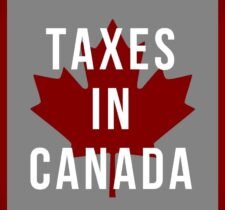The Taxation (Connection) Act 1997 (TCA) is the backbone of the modern tax system in Ireland. In 1997, this law introduced decades of existing laws by establishing a well-organized structure. Primary goals? Make the tax landscape easy for individuals, companies, and tax authorities.
Before this law, tax laws were scattered across several documents, making them complicated. The TCA consolidated everything under one roof to improve, clarify, and integrate the tax code nationwide, replacing existing laws.

Why was TCA introduced?
In the late 1900s, the Tax Act became very complicated. Many changes, temporary segments, and fragmented rules made it difficult for taxpayers to explain the law. What is the law of tax coupling?
The Taxation (Connection) Act 1997 (TCA) is the backbone of the modern tax system in Ireland. In 1997, this law established the existing rules by introducing a well-organized law that has been effective for decades. Primary goals? Make the tax landscape easy for individuals, companies, and tax authorities.
Before this law, tax laws were scattered across several documents, making them complicated. The TCA changed everything under one roof to improve, clarify, and integrate the tax code nationwide, replacing existing laws.
Why was TCA introduced?
In the late 1900s, the Tax Act became increasingly complicated. Many changes, temporary segments, and fragmented rules made it difficult for taxpayers to understand the law.
The Irish government passed the TCA to:
- Consolidate existing tax laws.
- Streamline legal interpretation
- Enhance taxpayer understanding
- Improve compliance and transparency.
- Support better enforcement by revenue authorities.
Core Areas Covered in the TCA
The Taxes Consolidation Act touches on nearly every type of taxation applicable in Ireland. Below are its most significant areas:
Income Tax
The Act outlines detailed provisions for how individuals are taxed based on earnings from employment, self-employment, pensions, and rental income. It defines:
- Tax brackets and rates
- Personal credits and exemptions
- Deductible expenses
- Filing deadlines and penalties
Corporation Tax
Businesses and corporate entities must adhere to the rules specified in the TCA for calculating and paying tax on profits. It includes:
- Determining chargeable profits
- Group relief and losses
- Capital allowances on equipment or property
- Anti-avoidance measures
Capital Gains Tax (CGT)
This section applies to gains from the sale of property, shares, or other capital assets. The TCA defines:
- Applicable CGT rates
- Indexation relief and exemptions
- Transfer rules for assets between spouses or companies
Dividend and Withholding Taxes
The TCA outlines when a person or entity must withhold tax on certain payments, such as:
- Dividends to shareholders
- Interest to non-residents
- Royalties and professional fees
Tax Compliance & Revenue Powers
The Act gives revenue commissioners strong legal tools to:
- Audit individuals and businesses
- Investigate tax fraud
- Enforce tax collection
- Impose penalties for non-compliance
Highlights of Important Sections
Here are a few noteworthy sections within the TCA:
Section 81: Governs what expenses are allowable as deductions for businesses.
Section 848A—Offers tax relief for charitable donations.
Section 835C—Establishes Ireland’s transfer pricing rules in line with OECD standards.
Part 36 – Details tax returns, record-keeping, and revenue investigations.
Continuous Updates Through Finance Acts
One of the unique aspects of the TCA is its flexibility. It is not static—each year, the Irish government updates it through the Finance Act. These updates reflect:
- Policy changes in national budgets
- Tax rate or relief limit
- EU and international measures for tax compliance
- New relief or removal of old people
It is essential to stay informed about these annual changes and optimise your tax status.
Who Benefits From the Taxes Consolidation Act?
The TCA benefits a wide range of stakeholders, including:
- Individuals—Gain better clarity on income tax obligations.
- Corporations: Understand and plan by tax laws that affect profits and operations.
- Tax advisors—Use the TCA as a single source for guidance and interpretation.
- Government agencies—Use it to enforce tax laws and monitor compliance.
Advantages of a Consolidated Tax Framework
The Taxes Consolidation Act offers numerous advantages for taxpayers and tax professionals alike:
Simplicity – Reduces confusion by having one centralized law
Transparency – Makes it easier to understand what is taxable and what is not
Legal Certainty – Helps avoid misinterpretation and litigation
Better Compliance – Clear rules mean fewer errors in tax returns
Efficient Administration – Revenue authorities can operate with greater speed and consistency
Digital Access and Modern Usage
In today’s digital era, the entire TCA is available online through government websites and legal databases. These resources often include:
- Annotations
- Searchable sections
- Historical versions of clauses
- Case law interpretation
It ensures that the lawyers, accountants, and financial planners have 24/7 access to the most accurate information available.
Final thoughts
The Tax Connection Law represents one of the most significant improvements in the history of Irish taxation. By combining a wide range of laws into an integrated system, it has made tax compliance more manageable for everyone, with individuals providing easy returns to multinational companies working on international tax issues.








